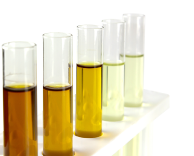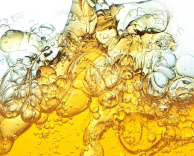Oil Sampling Best Practices: Accurate Techniques for Reliable Analysis
Introduction
Oil sampling is a critical aspect of maintaining and optimizing machinery performance. By
collecting accurate, representative oil samples, businesses can identify wear trends, detect
potential machine failures, and extend the life of valuable assets. Whether you’re running a
small machine or managing large industrial equipment, proper oil sampling provides valuable
insights into the condition of your lubricants and helps prevent costly downtime.
In this article, we’ll explore the best practices for oil sampling, covering the essential
techniques, sampling locations, and hardware that ensure you get the most accurate and reliable
results. We’ll also provide tips for avoiding common sampling errors and highlight the
importance of consistency in your oil analysis program. By following these guidelines, you can
significantly improve the effectiveness of your oil analysis and better protect your machinery
investments.
The Essentials of Used Oil Sampling
Effective oil analysis relies on proper oil sampling. Without a representative sample, oil analysis cannot effectively monitor oil conditions, predict machine failures, or extend asset life. Whether using a test kit from a service provider or your equipment, getting the details right during sampling is essential for consistent, accurate, and useful results.
Maximizing Data Density & Minimizing Disturbance
The two main objectives in obtaining a representative sample are maximizing data density and minimizing data disturbance.
- Data Density: The sample should be collected in a way that ensures it contains as much valuable information as possible per milliliter of oil. This includes critical factors such as cleanliness, dryness, additive depletion, and wear particle concentration.
- Data Density: Data Disturbance: The sample must remain undisturbed during extraction. Contaminants introduced during the sampling process can distort the data, making it harder to distinguish original oil conditions from external factors.
By considering the procedure, sampling device, and location, you can ensure that your sample is accurate and representative. Uniform sampling procedures across the team help institutionalize oil analysis, ensuring consistency and reliability in the data.
Choosing the Right Sampling Location
Not all parts of a machine provide the same quality of data. Some locations yield much more useful information than others. In some cases, machines may need multiple sampling points to obtain a complete picture of their condition.
- Turbulent Zones: Sampling from areas with high fluid turbulence ensures the oil is well-mixed, capturing more accurate data on wear debris and contaminants.
- Upstream of Filters: Sample from locations before filters and separators, as they remove contaminants that could affect the sample’s integrity.
- Return Lines and Drain Lines: These are often the best sampling locations, as they contain a high concentration of wear debris and contaminants before they return to the tank and dilute the sample.
Live Zone Oil Sampling
Live zone sampling refers to extracting oil from circulating systems under normal operating conditions. For optimal quality, ensure samples are taken from turbulent zones, downstream of critical machine components, and during typical operational conditions. Avoid sampling from stagnant zones or after maintenance events like filter changes, as these can yield misleading results.
Sampling from Pressurized Lines
For pressurized systems, there are various sampling methods:
- Portable High-Pressure Tap Sampling: Uses a ball valve or needle valve with stainless steel tubing to reduce pressure before the sample enters the bottle.
- Minimess Tap Sampling: Installed on an elbow, this method is easy to use for low-pressure systems (below 500 psi).
- Ball Valve Tap Sampling: This method involves opening a valve after adequate flushing to collect a sample before closing it again.
- Portable Minimess Tap Sampling: Uses a quick-connect coupling that allows portable sampling in high-pressure lines.
Sampling Non-Circulating Systems
For systems without forced circulation, such as splash-lubricated or ring bath-lubricated bearings, sampling can be more challenging. Techniques include:
- Drain Port Sampling: Collect samples directly from the sump or casing, though it's crucial to avoid sediment accumulation in the sample.
- Vacuum Sampling: Uses a vacuum pump to draw fluid into the sample bottle, especially useful for viscous oils.
Oil Sampling Bottles and Hardware: Best Practices for Accurate Sampling
Ensuring accurate oil analysis begins with proper sampling techniques and the right tools. One critical step is to flush all sampling hardware thoroughly before collecting a sample. This prevents contamination and ensures a representative sample.
Key Steps for Effective Sampling:
- Flush the Hardware:
- Use a spare bottle to catch the purged fluid while flushing.
- Flush the system with 5–10 times the dead space volume before collecting the sample.
- Dead space includes:
- System dead-legs
- Sampling ports, valves, and adapters
- Probes on sampling devices
- Adapters for vacuum pumps
- Plastic tubing (single-use only to prevent cross-contamination)
2.Choose the Right Sampling Bottle:
- Size: Select based on the tests planned and laboratory requirements. Common sizes range from 50 mL to 200 mL. Larger bottles are recommended for tests like particle counts and viscosity analysis.
- Material:
- Plastic Polyethylene: Opaque; limits visual inspection but is lightweight and cost-effective.
- PET Plastic: Clear, glass-like material compatible with most oils, allowing for immediate visual analysis.
- Glass: Durable and reusable but heavier, more expensive, and prone to breakage. Offers superior cleanliness.
3. Fill Bottles Appropriately:
Leave an ullage (unfilled space) to enable proper fluid agitation for even distribution of suspended particles and water:
- Low Viscosity (ISO VG 32 or less): Fill to three-fourths of the volume.
- Medium Viscosity (ISO VG 32 to ISO VG 100): Fill to two-thirds of the volume.
- High Viscosity (above ISO VG 100): Fill to half the volume.
4. Ensure Bottle Cleanliness:
Select bottles that meet the cleanliness requirements for your application. Cleanliness is critical for accurate analysis and should be coordinated with the laboratory beforehand.
Key Tips for Effective Oil Sampling
To achieve accurate and reliable oil analysis, follow these essential guidelines:
1.Operate Equipment Normally During Sampling: Sample only when the equipment is at normal operating temperatures, speeds, and pressures for the most representative data.
2.Sample Upstream of Filters: Always sample before filters and separators to ensure the sample reflects the full condition of the oil.
3.Follow Written Procedures: Standardize sampling methods across all team members for consistency and reliability.
4.Flush All Equipment: Thoroughly flush sampling devices to eliminate contaminants before collecting the sample.
5. Sample Regularly: Ensure the oil is sampled at appropriate intervals to detect emerging problems early.
6. Send Samples Quickly for Analysis: Promptly forward samples to the lab to prevent changes in oil properties that could affect analysis results.
By following these guidelines, you can ensure your oil samples are accurate and reliable, providing valuable insights into the health of your machinery and helping to extend asset life.
Conclusion
In summary, effective oil sampling is essential for maintaining optimal machine performance and
preventing costly failures. By following best practices for sample collection, choosing the
right locations, and using proper equipment, you can ensure the accuracy and reliability of your
oil analysis results. Consistency and attention to detail are key—whether you're sampling from
circulating systems, wet sumps, or non-circulating systems, the quality of your sample directly
impacts the insights you gain.
Investing time and resources into proper oil sampling not only helps detect problems early but
also extends the life of your machinery, reduces downtime, and improves overall operational
efficiency. By implementing a robust sampling procedure and staying committed to ongoing oil
analysis, you can safeguard your equipment and optimize its performance for years to come.
FAQs:
- Use a designated sampling port or drain valve.
- Ensure all tools and containers are clean and ISO-compliant.
- Flush the sampling line before collecting the sample.
- Take the sample while the machinery is running at normal temperature.
- Seal and label the sample container with machine details, date, and time.
- Send the sample to a lab promptly, preferably within 24 hours.
- Detect contaminants like dirt, water, and fuel.
- Monitor the lubricant’s condition to determine if it needs replacement.
- Identify wear particles to predict mechanical issues.
- Prevent equipment failures through early detection.
- Extend machinery lifespan by ensuring optimal operating conditions.
- Select a clean sampling point where oil flow is consistent.
- Use a sampling pump or tool to avoid contamination.
- Flush out old or residual oil from the sampling line.
- Collect oil into a sterile, sealed container without overfilling.
- Label the sample accurately and send it to the lab as soon as possible for analysis.
For further information please visit https://www.minimacsystems.com/consultancy




